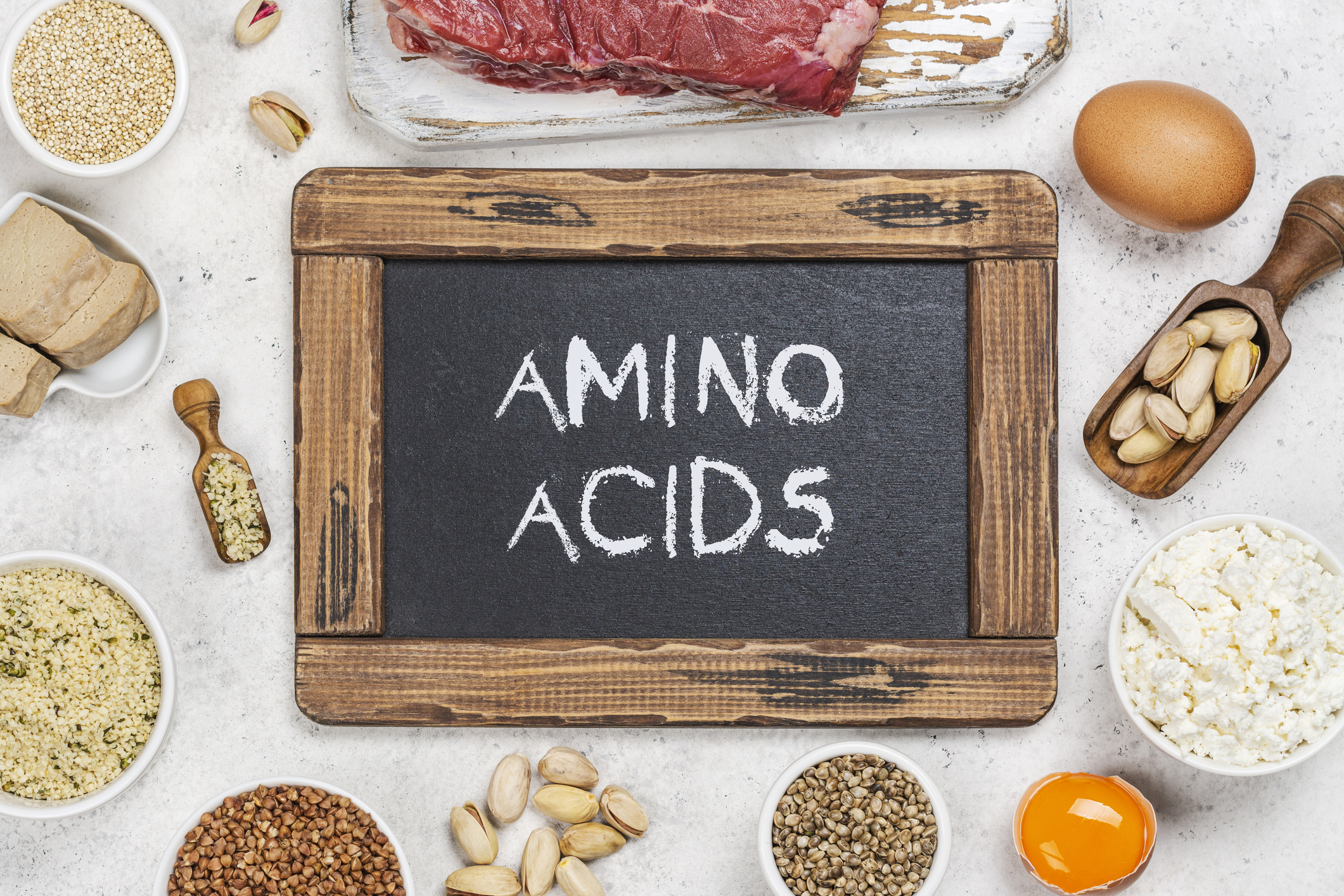There are few guarantees for what content might pop up on your MCAT, but I know one thing for certain: you will see amino acids on MCAT test day. Amino acids are the fundamental building blocks of proteins and mastering the properties, structures, and functions of amino acids is essential for success on the MCAT as it forms the foundation for understanding many biochemical processes in the human body.
In this guide, we will give an outline of everything you need to know about amino acids so you know exactly what to study for MCAT success.
Amino Acids MCAT Study Guide
Know Your Codes
Perhaps the lowest hanging fruit, and a great place to start: know the names of the amino acids, the 3-letter codes, and the 1-letter codes. Questions and passages can refer to amino acids on the MCAT in any of these formats, so it is crucial to have these memorized. For example, know that phenylalanine is also referred to as Phe and F.
Amino Acid Structure
Start by understanding the backbone of amino acids, then move on to memorizing the side chains that make each amino acid unique. The backbone includes the amino group (-NH2), a carboxyl group (-COOH), a hydrogen atom, and a side chain (R group) attached to a central carbon atom (alpha carbon).
Classification of Amino Acids
As you learn the side chains, work on categorizing the amino acids based on their properties. Amino acids can be classified into the following groups:
- Non-polar, aliphatic (ex: glycine, alanine)
- Aromatic (ex: phenylalanine, tyrosine)
- Polar, uncharged (ex: serine, threonine)
- Positively charged (basic) (ex: lysine, arginine)
- Negatively charged (acidic) (ex: aspartic acid, glutamic acid)
Sign up to get expert tips and exclusive invites to free MCAT classes and medical school admissions workshops!
Essential vs. Non-essential Amino Acids
Essential amino acids cannot be synthesized by the body and must be obtained from the diet, while non-essential amino acids can be synthesized by the body. The nine essential amino acids are:
- Histidine
- Isoleucine
- Leucine
- Lysine
- Methionine
- Phenylalanine
- Threonine
- Tryptophan
- Valine
A good MCAT mnemonic for this is PVT TIM HiLL. The non-essential amino acids are… all the rest!
Isoelectric Point (pI)
The isoelectric point (pI) of an amino acid is the pH at which it carries no net electrical charge. It can be calculated based on the pKa values of the amino and carboxyl groups. It is NOT important to memorize the pI of each amino acid, but understand how to calculate it given the pKa values of the amino and carboxyl groups.
When in doubt, look back at AAMC practice questions and questions from your MCAT practice exams on this topic to see how it is tested. Pro tip: it can be super helpful to study this alongside titrations!
Peptide Bonds
Peptide bonds form between the carboxyl group of one amino acid and the amino group of another, resulting in the formation of a dipeptide and water molecule. That means this is classified as a condensation reaction that forms a product containing an amide.
This process is endergonic, meaning it requires energy, mainly in the form of ATP. Multiple amino acids linked by peptide bonds form polypeptides. Get comfortable recognizing peptide bonds when you look at a polypeptide chain.
Protein Structure
Proteins have 4 levels of structures you should be familiar with, and each level can be tested in unique ways. We have highlighted some important features of each level of structure below.
- Primary Structure: The linear sequence of amino acids in a protein.
- Secondary Structure: Regular structures such as alpha helices and beta sheets stabilized by hydrogen bonds.
- Tertiary Structure: The overall 3-dimensional structure of a single protein molecule, stabilized by various interactions including hydrogen bonds, disulfide bonds, hydrophobic interactions, and electrostatic interactions.
- Quaternary Structure: The arrangement of multiple protein subunits (if any) and the interactions between them.
Protein Denaturation
Protein denaturation involves the disruption of a protein’s tertiary or quaternary structure, resulting in the loss of its biological activity. Denaturation can be caused by heat, pH changes, or exposure to chemicals. Being able to recognize when a protein is being denatured in a passage is key to helping you answer questions.
Protein Functions
Proteins have diverse functions in the body, including:
- Enzymes: Catalyze biochemical reactions
- Structural Proteins: Provide support and shape to cells and tissues
- Transport Proteins: Carry molecules across membranes
- Hormones: Serve as signaling molecules
- Antibodies: Part of the immune system’s defense against pathogens
Amino Acid Metabolism
Make connections between your amino acid knowledge and metabolism to deepen your understanding of both topics. Below are the areas of metabolism where proteins play a role.
- Transamination: Transfer of an amino group from an amino acid to a keto acid, yielding a new amino acid and a new keto acid.
- Deamination: Removal of an amino group from an amino acid, resulting in the formation of ammonia and a keto acid.
- Urea Cycle: The process by which ammonia is converted into urea in the liver and excreted in the urine.
Amino Acid MCAT Analysis
Techniques such as chromatography and electrophoresis are used to separate and quantify amino acids in biological samples. Get comfy recognizing these in passages, and know when they apply!
Struggling to master amino acids? Watch this quick Blueprint MCAT video from our Self-Paced Course that breaks them down once and for all. Want more lessons like this? Start your free trial today and dive in!
Conclusion
There is a TON to know about proteins and amino acids for the MCAT. I recommend starting with memorizing the amino acid codes, then categorize them by side chain, and then build your knowledge including amino acid chemistry and roles within the body. Then get familiar with the types of amino acid questions that will show up on your MCAT. And remember, always return to AAMC materials to see how you will be tested on this material if you are ever in doubt.




